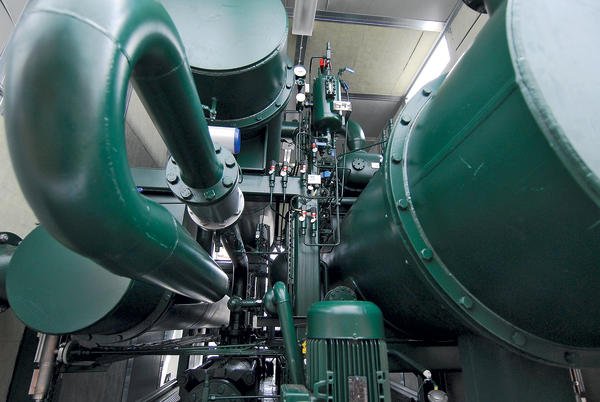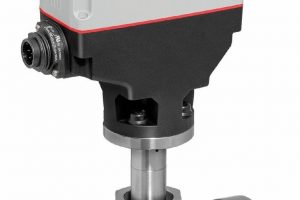As common sense would dictate, the first step towards increased energy efficiency is to start using less energy. Recovering heat can fundamentally change the energy consumption of a business. Recovering waste heat with modern plate heat exchangers is the least costly and most easily implemented way forward for the average process plant.
The author: Udo Blume Business Developement Manager, Alfa Laval Mid Europe
Ever rising energy prices and environmental legislation are putting hard pressure on process industries around the world. Staying competitive means finding new ways to increase production and at the same time reduce energy consumption. Companies are discovering an unexpected answer to this dilemma: their waste heat. Investing in equipment for waste heat recovery and reuse has proven very profitable. The upside is often substantial and payback times are frequently less than a year. An added bonus is that CO2 emissions and climate impact are generally reduced as well.
Process industries consume large amounts of energy, most of it coming from fossil fuels. This energy is often simply cooled off and released into a nearby lake or the air after it has been used in the process. With a combination of modern heat exchangers and creative thinking, more and more companies are now finding ways to profit from recycling their waste heat. Up to five times more energy can be recovered and put to new use by switching to modern equipment.
Different routes to profitability
There are many ways heat can be reused once it has been recovered. The best strategy inevitably depends on the plant and its surroundings. It is important to thoroughly analyse all the possibilities in order to find the optimal mix. The first and perhaps most obvious approach is to save energy by reusing it in the process, for example in order to heat the water feed of a steam boiler. Recovering heat can also reduce steam consumption in the plant. The excess steam can then be used to generate electricity, which can either be supplied to the plant or sold to the grid.
If the plant is in the vicinity of a city, the waste heat can be fed into the district heating network. Sometimes heat can be sold to neighbouring process industries if the energy signature of the two plants fits. Recovering waste heat can also lead to an increase in a plant’s production rate. Installing new heat exchangers may be the right cure if there are bottlenecks related to heating or cooling.
Investing in heat recovery can be very profitable if new investments in utility systems for heating and cooling (e.g. boilers and cooling towers) are needed. Recovering heat often leads to reduced steam consumption, meaning a smaller boiler and a smaller tower for cooling off the remaining waste heat will suffice. An organic Rankine cycle (ORC) system can produce electricity from lukewarm water. Waste heat can be turned into chilling capacity with the help of an absorption chiller.
Heat exchangers as key components
The key components in a waste heat recovery system are heat exchangers. These devices enable energy transfer from one stream (fluid or gas) to another. An industrial plant uses energy in its processes in numerous ways. With the help of heat exchangers the heat used can be recovered and put to renewed use, either in the same process or in other parts of the plant.
The efficiency of the heat exchangers is a very important factor. The more heat that can be recovered, the higher the profitability of the investment. There are several different heat exchanger designs: the most common type, shell-and-tube, unfortunately suffers from very low efficiency. Modern heat exchangers are built according to the plate principle. Their efficiency is up to five times higher than with a shell-and-tubes. This makes a huge difference to the amount of heat that can be recovered as well as to the return on investment.
Environmental benefits
Significant reductions in fuel consumption will have a positive effect on the environment, as CO2, SOX and NOX emissions will be substantially lower. At a time when global warming is one of the greatest challenges to man, waste heat recovery is an important step in the right direction. A report by the International Energy Agency (IEA) estimates that the world’s processing industries are using about 50 % more energy than necessary (World Energy Outlook 2008). If they were to switch to the best available technology, power consumption would drop by roughly 1200 GW. This is approximately three times the entire global nuclear power production.
The world’s fossil fuel reserves will undoubtedly run out in the future if we continue using energy as we do today. Prices will rise steeply as supplies decrease. Price predictions have often been too low. For example, back in 2006, the International Energy Agency predicted a steady oil price of around 45 to 50 dollars per barrel until 2030. Today, just five years later, the figure is well over 100 dollars.
Scientists, politicians, organisations and companies have put a lot of thought into finding a solution to the energy crisis, or at least stopping it from getting worse. McKinsey, the internationally renowned consultants, concluded that simply trying to switch from fossil fuels to other energy sources such as wind power will not suffice. Energy efficiency stands out as the single most attractive and affordable component of the necessary shift in energy consumption (McKinsey Quarterly, January 2010).
cpp-net.com/0112430
Heat exchanger combines both technologies

Plate or tube?
FusionLine heat exchangers from Alfa Laval feature a unique design with truly open flow and no contact points. They offer the best of both worlds, combining the energy efficiency, accessibility and modularity of plate technology with the viscous and particulate handling capabilities of tubular technology. They are a great choice for viscous and particulate products, which have traditionally been processed in tubular heat exchangers.
FusionLine features a 4 to 6 mm open channel on the product side, which is easy to CIP and fully accessible. The open-channel design is made possible by bonded plate cassettes on the media side. The cassettes are bonded using AlfaFusion technology, which fuses two stainless plates together into one piece with no joints.
The AlfaFusion technology allows the use of thin plates providing optimum heat transfer and thus maintains a high resistance to product pressure. The novel channel geometry ensures gentle prod-uct treatment. Plates can be easily added and removed, ensuring the necessary flexibility to react to changes in production volume. The footprint is also 30 to 40 % smaller than that of a tubular heat exchanger.
Share:







